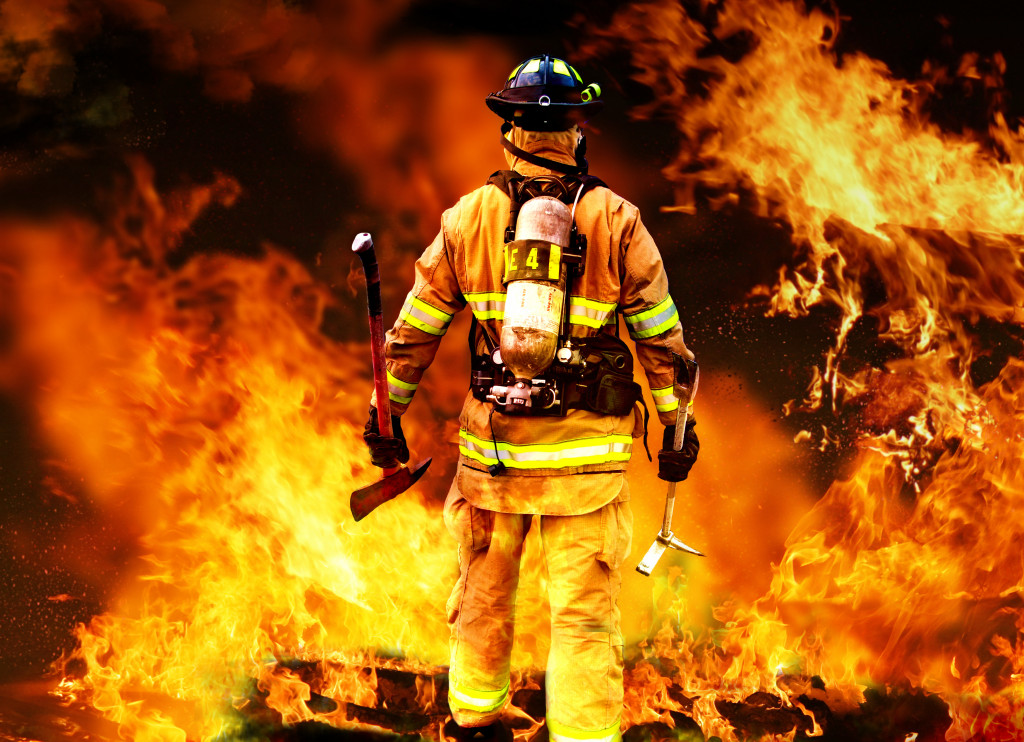Fire hazards can be a real danger in the workplace. Every year, thousands of fires occur in the workplace, many of which could have been prevented with simple safety measures. According to data from Federal Emergency Management Agency (FEMA), over 108,000 non-residential fire incidents are reported annually. These fire incidents can lead to heavy losses in terms of property damage and human casualties. Furthermore, according to similar data from FEMA, there were around 18,700 office or store fires in 2019 in the USA, which cost $744 million in direct property damage. Besides the direct damage, there are also various indirect damages, such as downtime, loss of data, and employee injuries, which can cost businesses even more.
Fortunately, as a business owner, you can do several things to prevent fire hazards in your workplace. Here are some of the best practices you can follow:
Keep Your Workplace Clean and Free of Clutter
A clean and organized workplace is not only more pleasant to work in, but it can also help to prevent fire hazards. Clutter provides fuel for a fire, and blockages can prevent firefighters from accessing the scene. By keeping your workplace clean and free of clutter, you can help to reduce the risk of a fire developing.
In addition, pay attention to areas where heat or sparks may be present, such as near electrical equipment or in areas where flammable liquids are being used. These areas should be kept clean and debris-free to help prevent accidental fires.
Avoid Using Extension Cords
In any workplace, it’s essential to be aware of fire hazards. One potential hazard that is often overlooked is the use of extension cords. While extension cords can be convenient, they also pose a severe fire risk. When overloaded or damaged, extension cords can overheat and start a fire.
To avoid this hazard, it’s best to use permanent wiring whenever possible. If you must use an extension cord, make sure it is in good condition and rated for the amount of power you need. Also, keep extension cords away from heat sources and areas where they might be damaged.
Inspect Electrical Equipment Regularly
Workplace fires are preventable. Regularly inspecting your workplace’s electrical equipment can identify and correct potential fire hazards before they cause damage or injuries. Some common fire hazards in electrical equipment include frayed or damaged wires, overloaded circuits, and defective plugs or switches.
Look for signs of wear and tear, such as frayed wires or loose connections. Ensure all cords and plugs are in good condition and properly labeled. If you have any questions about the condition of your electrical equipment, consult a qualified electrician.

You can easily find a commercial electrician for a thorough inspection. A licensed commercial electrical contractor can not only help inspect the wiring but also eliminate any potential fire hazard by fixing faulty equipment. This can help avoid fires that can lead to significant losses.
Don’t Use Flammable Liquids
Flammable liquids are common in many workplaces, from garages to factories. While they may be necessary for some tasks, using them safely to prevent fire hazards is essential. One of the most dangerous things you can do is to use a flammable liquid to try to extinguish a fire.
The heat from the fire can cause the liquid to ignite, leading to an even worse blaze. Also, flammable liquids can easily spread a fire if not stored properly. If you must use flammable liquids in your workplace, follow all safety guidelines and keep them away from ignition sources.
Have a Fire Evacuation Plan
Regardless of your steps, fire in your workplace is still possible. Hence, it is not only advised but also a must to have a fire evacuation plan. In a fire, employees must know how to evacuate the building safely and where to go. A well-crafted plan will help to ensure that everyone knows what to do in the case of a fire, minimize injuries, and reduce property damage. Here are a few tips for creating an effective fire evacuation plan:
- Identify all exits and make sure they are marked.
- Conduct regular fire drills so that employees are familiar with the evacuation route.
- Designate a safe meeting place outside of the building where everyone can regroup.
- Ensure all employees know how to use fire extinguishers and other fire safety equipment.
Workplace fire hazards can be costly. While some workplace fires are unavoidable, there are many steps you can take to reduce the risk of fire in your company. Following the tips above, you can create a safer workplace and help prevent costly damages.



